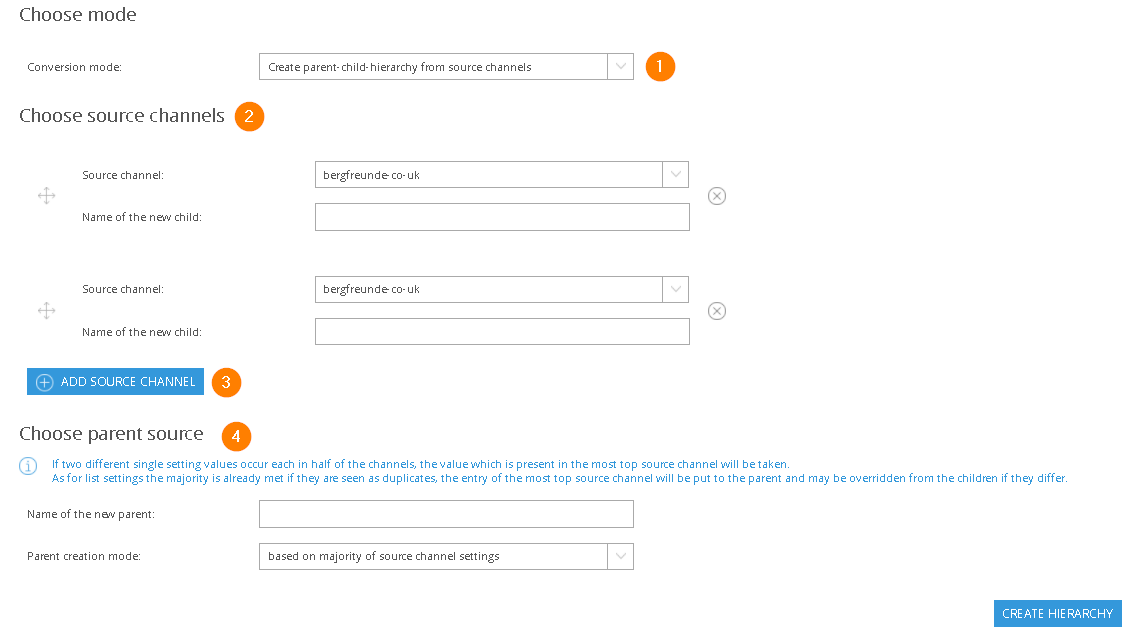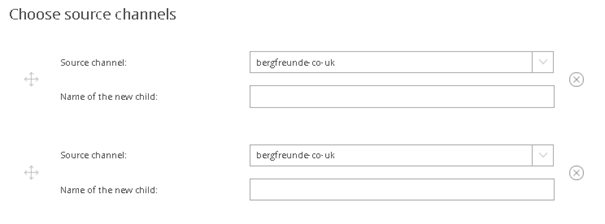Creating parent-child structure from existing channels
Navigate to → Channel Management → Channel Wizard
In the wizard, you have to make several selections:
Choose Conversion Mode (1)
First, choose the conversion mode (1). In the current version, there is only the default mode available.
Choose Source Channels (2)
The new hierarchy is generated from at least 2 sources (2). These sources determine settings and properties of the new parent (see Choose Parent Source below), which are then inherited by its child channels. You may choose the same channel twice, but you have to set two sources. Source channels must not be part of an existing parent-child hierarchy.
To use more than two sources, simply click (3). Each selected source channel will result in a new child channel. Child channel names must be unique. It is not possible to create only one child channel.
Delete selected channels and child names by clicking . There is no confirmation dialogue for deletion.
Choose Parent Source (4)
There are two ways to determine the settings of the new parent channel. Either copy them from an existing channel or create them from the child channels selected above.
This option is governed by the Parent creation mode dropdown menu (1).
The three options are as follows:
Based on existing channel lets you select a channel to clone the settings from.
Based on source channel settings which met a threshold selects all settings which occurred in at least x number of source channels, where x can be defined as any number.
Based on majority of source channel settings keeps all settings which are shared between the majority of child channels.
If two single setting values each occur in exactly half of the source channels, the one from the higher-listed source channel is chosen.
If multiple candidates for a single setting value meet the defined threshold, the value occuring most frequently is selected. If this does not resolve the conflict, the value from the top-listed channel is chosen.
For list settings, similar entries are counted when determining the majority or threshold. In that case, the setting will be taken from the top-listed source channel and may be overwritten by the differing child channel values.
You also have to provide a unique name for the newly created parent channel (2),
Create Hierarchy
To finish the process, click .







